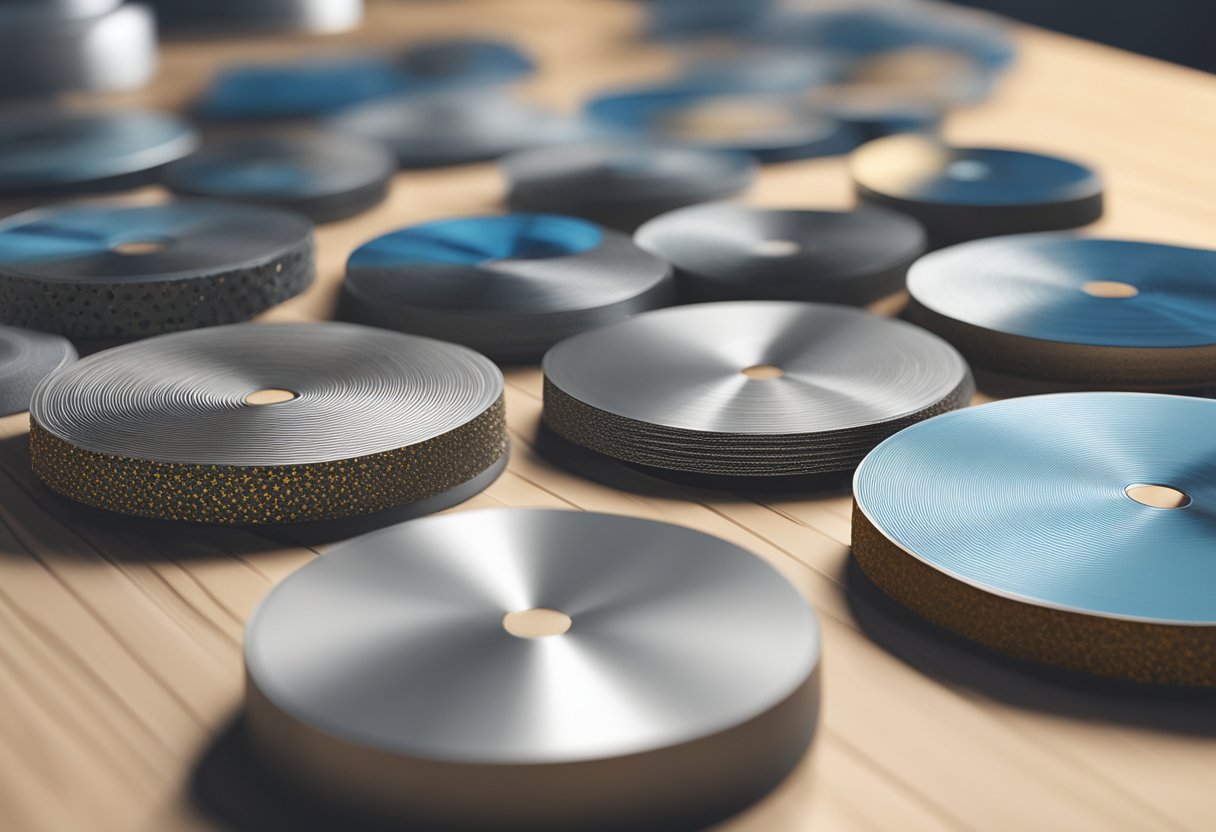With their versatile applications in various industries such as metalworking, woodworking, and automotive repair, Abrasive discs empower professionals to grind, sand, and shape materials ranging from metals and stones to polymers and other synthetics. Thanks to their large variety of types, sizes, and grits, they offer experts a one-stop shop for all their needs.
Understanding abrasive discs’ technical aspects and characteristics is crucial and empowering in making an informed decision on which product to use. Factors such as the material, the tools, and the desired surface treatment all play a role in this selection process. This understanding gives professionals the confidence to decide whether the disc is made specifically for use by a particular machine or hand.
Choosing the correct abrasive disc can significantly enhance the quality of the final product and the process’s efficiency. This article will delve into the top abrasive discs, providing insights into their features, applications, and technical aspects. We will also cover some of the leading brands and product lines, as well as the support and resources available in the industry, empowering professionals to achieve their desired results. Click here for further information on our site, Ice Age Tools.
Key Takeaways
- Understanding the technical aspects of abrasive discs is crucial in selecting the right product for a specific application.
- Selecting the right abrasive disc can significantly improve the finished product’s quality and the work process’s efficiency.
- Various types of abrasive discs are available, and choosing the right one depends on factors such as the type of material to use, the intended outcome, and the tools to be employed.
Understanding Abrasive Discs
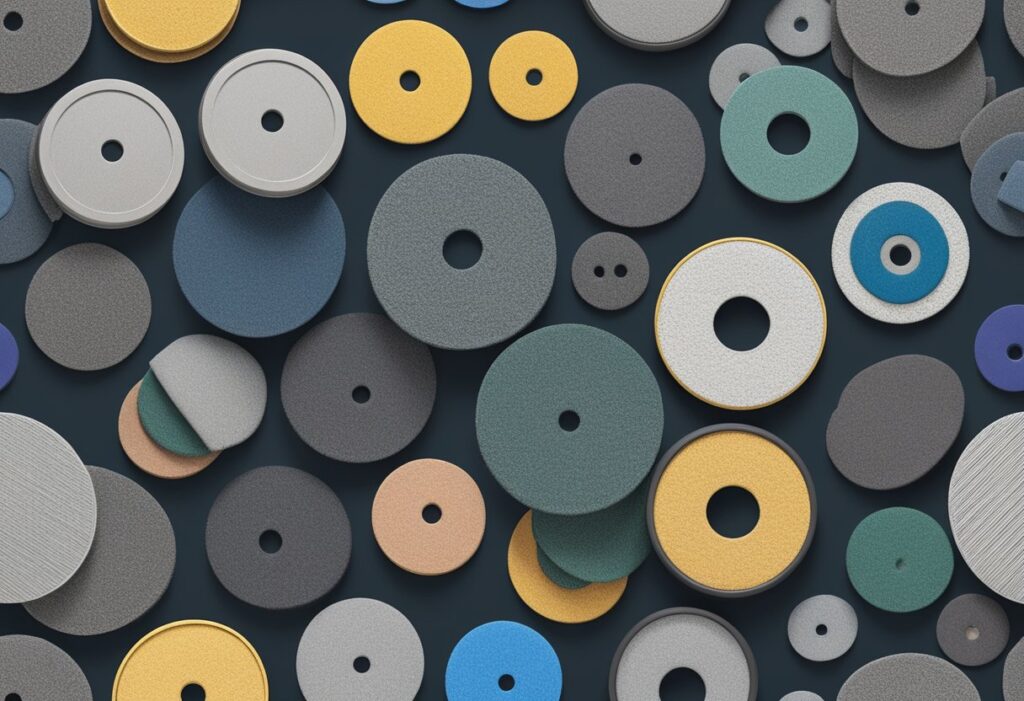
In metalworking and other industries, abrasive discs are essential for cutting, grinding, and polishing various materials. Understanding the different types of abrasive discs, materials and grains, and grit sizes is crucial to selecting the right disc for the job.
Types Of Abrasive Discs
Several types of abrasive discs are available, each designed for specific applications. Grinding discs are the most commonly used in various industries. They are ideal for grinding and shaping metals, stones, and other materials. Cut-off wheels are another type of abrasive disc utilized for slicing through various materials, including metals, polymers, and more. Sanding discs are employed for surface smoothing and sanding, whereas flap discs and polishing are among their many uses.
Abrasive Materials And Grains
Abrasive materials and grains are the critical components of abrasive discs. The versatility and availability of aluminum oxide make it the most often-used abrasive substance. Silicon carbide is another popular abrasive material ideal for rubbing stones. Glass, wood, and leather are examples of non-metals. Super abrasive discs made of diamond or cubic boron nitride (CBN) have the highest hardness of any abrasive grain.
Grit Sizes And Their Applications
The size of the disc’s abrasive granules is called grit size. The smaller the grit size, the coarser the abrasive disc. Coarse grit sizes are ideal for removing material quickly, while fine grit sizes are better for finishing and polishing surfaces. For example, a 36-grit disc is suitable for heavy grinding and stock removal, while a 120-grit disc is ideal for finishing and polishing.
Understanding the different types of abrasive discs, materials and grains, and grit sizes is crucial to selecting the right disc for the job. Considering the chosen material, the abrasive disc’s ability to achieve the task depends on its operation and intended result.
Applications Of Abrasive Discs
Abrasive discs are versatile tools used in various industries for grinding, deburring, cutting, and surface preparation. This section will explore the most common applications of abrasive discs.
Metalworking And Fabrication
One of the primary applications of abrasive discs is in metalworking and fabrication. Grinding discs might be used for shaping and grinding metals, while cutting discs have jobs for cutting various metals, such as pipes and sheets. Finishing & polishing metal surfaces with flap discs produces a uniform and smooth surface.
Finishing And Polishing
Abrasive discs apply a final coat of polish to a variety of surfaces. Flap discs are handy for this application, providing a smooth and even finish on metal, wood, and plastic. Fiber discs are also commonly used for finishing and polishing, especially on stainless steel and aluminum surfaces.
Cutting And Grinding
Cutting and grinding are two of the most common applications of abrasive discs. Cutting discs are used to cut through various materials, such as metal, stone, and concrete. Grinding discs, on the other hand, are used to grind and shape different materials, including metal, stone, and concrete.
Abrasive discs are versatile tools for various applications, including metalworking and fabrication, finishing and polishing, cutting, and grinding. However, it’s crucial to remember that these tools can be hazardous if not used correctly. Always wear appropriate safety gear, follow the manufacturer’s instructions, and be mindful of potential hazards. By selecting the correct type of abrasive disc for the job and using it safely, users can accomplish what needs doing in a timely and effective manner.
Selecting The Right Abrasive Disc
When selecting the right abrasive disc, it is essential to consider the material it is undertaking on and the desired performance metrics. Here are some key factors to keep in mind:
Matching Discs To Materials
Different abrasive discs are customized to work with various materials. When working with hard materials like steel, an abrasive cutting disc is the way to go, while a grinding disc is ideal for working with stones and metals. Match the disc to the material to attain the best possible outcomes.
Aluminum oxide is a popular grain choice for abrasive discs. This material is known for its durability and versatility, making it suitable for various applications. However, certain abrasive discs also use other materials, such as zirconia and diamond.
Evaluating Performance Metrics
When selecting abrasive discs, it is important to consider performance metrics like cut-rate and durability. Cut-rate refers to the speed at which the disc can cut through the material, while durability refers to the disc’s ability to maintain its cutting ability over time.
When determining the reduction rate, considerations such as disc speed & applied pressure are essential. For instance, increasing the disc’s pressure and speed will hasten the cutting rate but can also shorten the disc’s lifespan.
Durability is also affected by factors like disc material, disc thickness, and the type of backing used. Thicker discs and more robust backings are generally more durable but may result in a slower cut rate.
Considering factors like material and performance metrics, Choosing the appropriate abrasive disk for any task is possible.
Top Abrasive Discs For Your Grinding Needs
Regarding grinding needs, Amazon offers a wide range of abrasive discs that can get the job done. Here are the top Amazon brand abrasive discs that stand out for their quality and effectiveness.
Bosch Professional Standard for Metal Cutting Discs

Bosch Professional Standard for Metal Cutting Discs is a reliable choice for those who need to cut through metal. These discs are made with high-quality materials and always provide a clean and precise cut. They are also durable and long-lasting, making them a cost-effective option for those needing to cut metal regularly.
DEWALT Grinding Wheel, General Purpose

DEWALT Grinding Wheel, General Purpose, is versatile for various grinding needs. These wheels are made with high-quality materials and provide a smooth and consistent grind. They are also easy to use and can be attached to most grinders.
Makita 5-Pack Aggressive Grinding for Metal
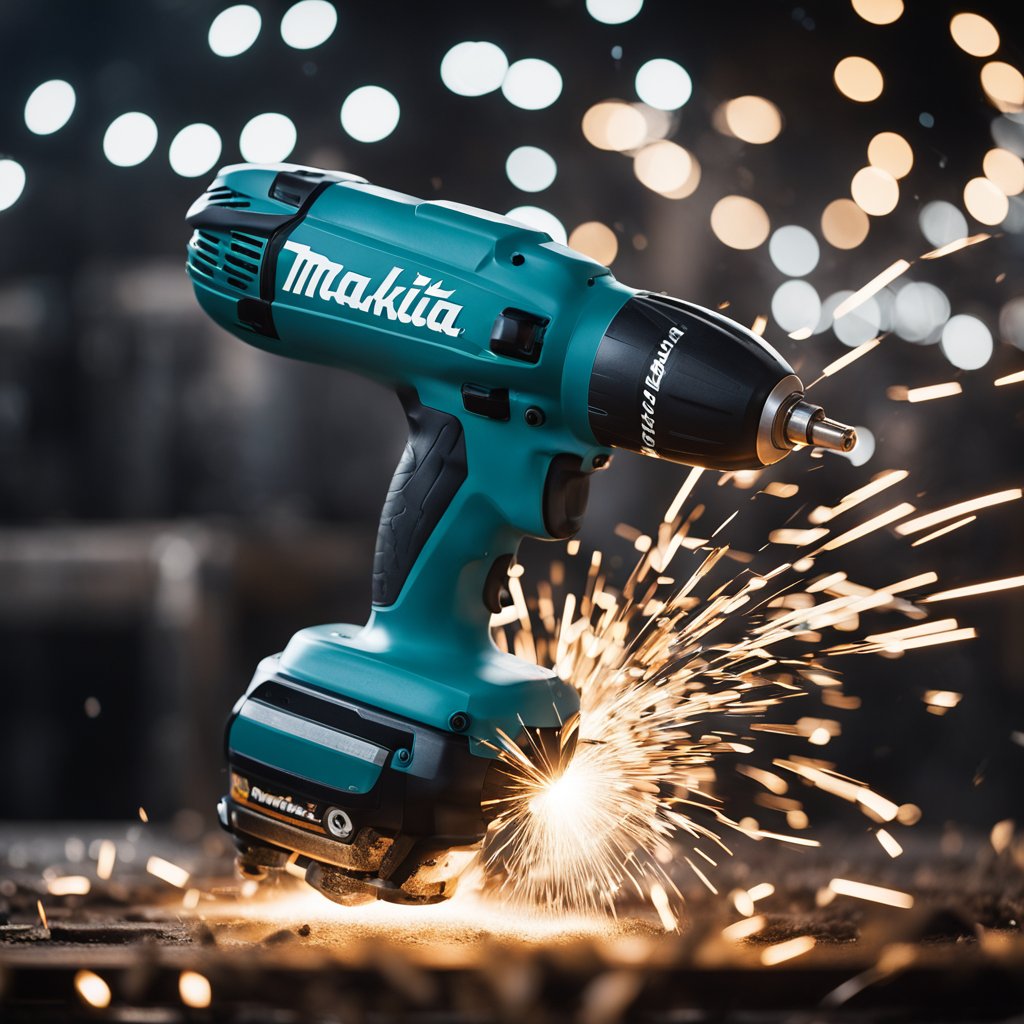
Makita 5-Pack Aggressive Grinding for Metal is an excellent option for those needing to remove a lot of material quickly. These discs are produced with high-quality materials and provide a fast and aggressive grind. They are also long-lasting and can handle heavy use.
3M Silver Grinding Wheel
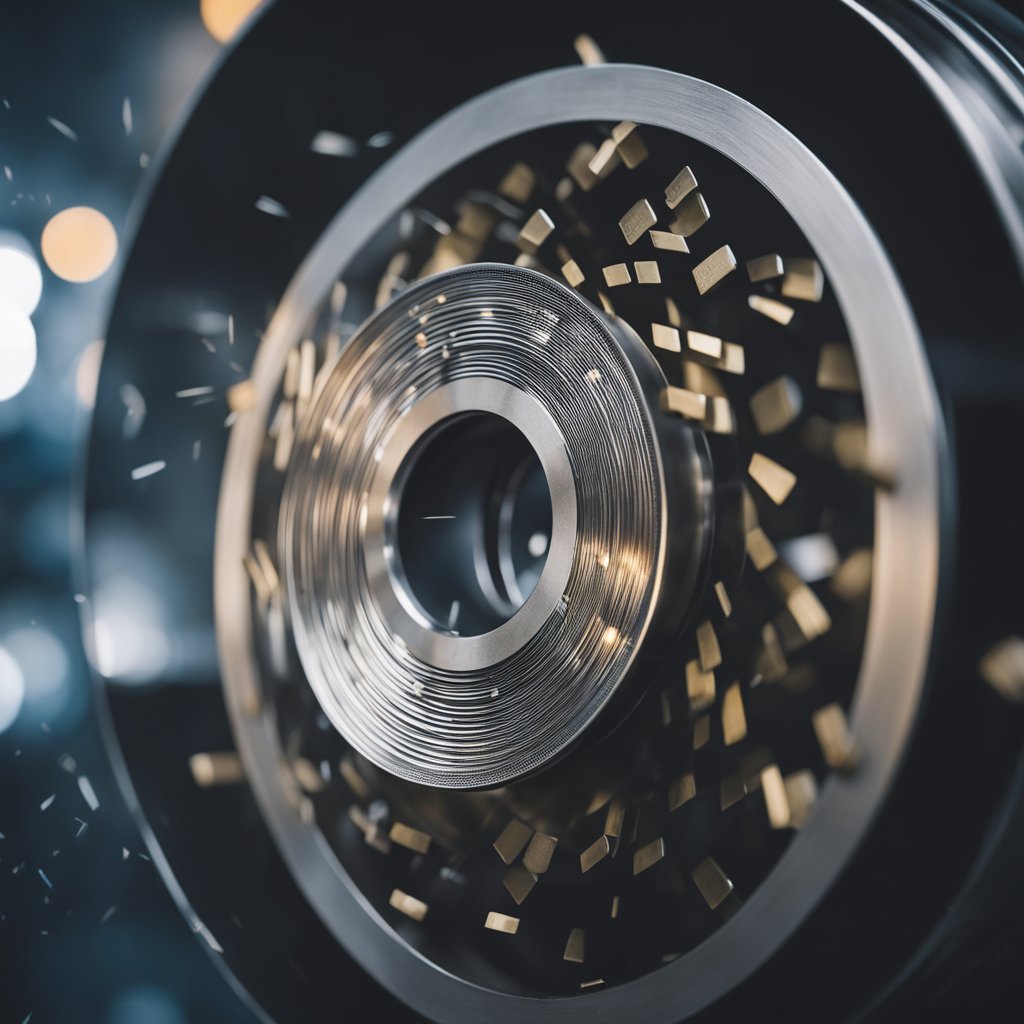
3M Silver Grinding Wheel is a premium option that provides a smooth and consistent grind. It is made with high-quality materials designed to last longer than other grinding wheels. The wheels are also easy to use and can be attached to most grinders.
Benchmark Abrasives 4.5″ Grinding Wheel
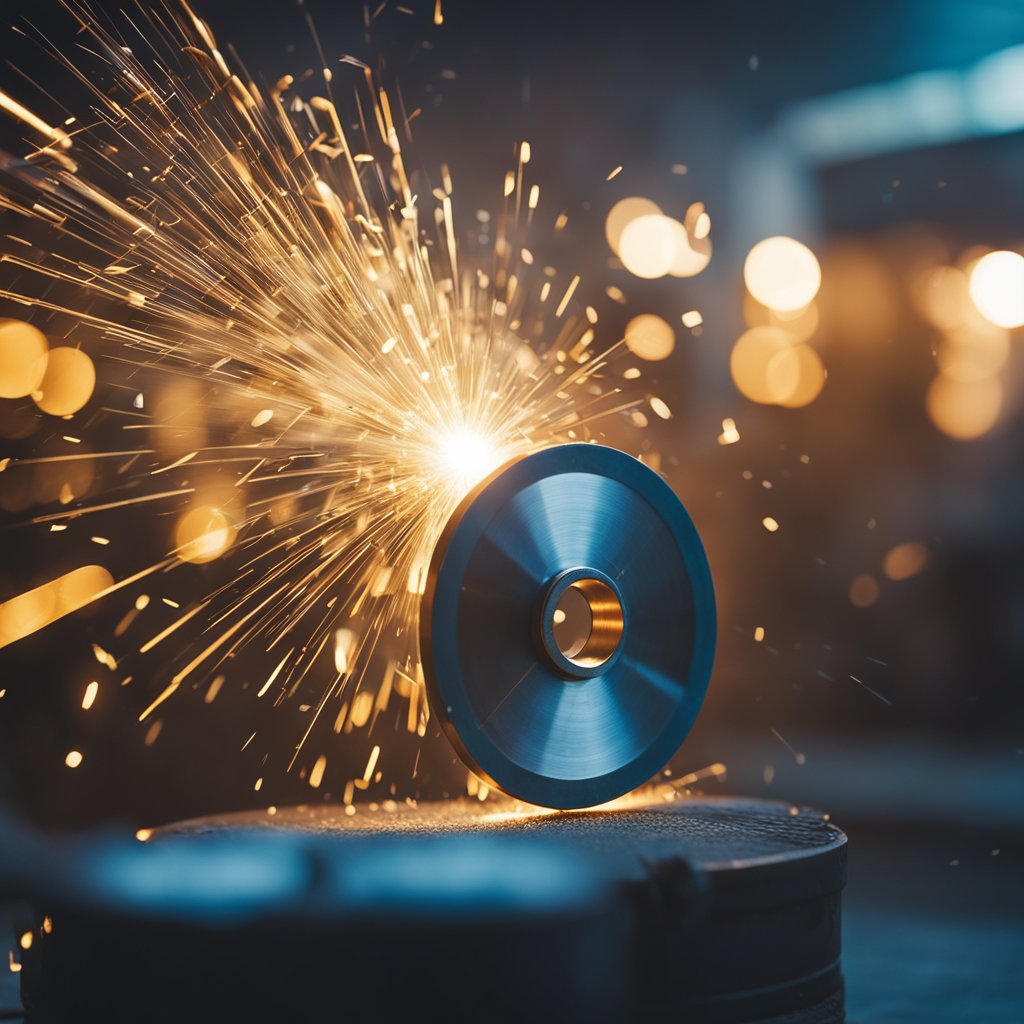
Made with premium aluminum oxide grains, the Benchmark Abrasives 4.5″ Grinding Wheel is designed for high-performance stock removal. It is suitable for use on various metals, including stainless steel. This grinding wheel offers fast and efficient material removal, making it ideal for heavy-duty grinding tasks.
“These top 5 abrasive discs offer a range of options for grinding needs. Whether you need to cut through metal or remove a lot of material quickly, an abrasive disc can get the job done effectively and efficiently.”
Technical Aspects Of Abrasives
Innovations In Abrasive Technology
In recent years, abrasive technology has undergone significant advancements. The use of new materials and manufacturing processes has led to the development of abrasive discs that are more efficient, durable, and versatile than ever before. For instance, super abrasive discs, made of diamond and cubic boron nitride (CBN), are now available in various sizes and grits. These discs are ideal for grinding and sanding nonferrous metals, ceramics, glass, stone, and building materials.
Another innovation in abrasive technology is using nonwoven nylon or abrasive material to create surface conditioning discs. These discs originate from to achieve a surface roughness that is both homogeneous and aesthetically pleasing. They are ideal for cleaning, deburring, and polishing metal surfaces.
Safety And Usage Guidelines
Following safety procedures is paramount to avoid scratches and injuries when using abrasive discs. Here are some safety tips to keep in mind:
- Always protect yourself by donning a face mask, gloves, and goggles.
- Ensure that the abrasive disc is compatible with the tool you are using.
- Check the disc for damage or cracks before use.
- Keep your hands and fingers away from the rotating disc.
- Keep the disc’s RPM rating in mind at all times.
In addition to safety guidelines, it is essential to use abrasive discs correctly to achieve optimal results. Here are some usage tips to keep in mind:
- Choose the right disc for the job. Different discs are adaptable to many materials and applications.
- Use the correct grit size for the job. A coarse grit is best if you need to remove material quickly, while a fine grit is best if you want a smooth finish.
- Use the correct pressure and speed for the job. Applying too much pressure or using too high a speed can damage the disc or the workpiece.
- Use a consistent motion when using the disc. This will ensure that the disc wears uniformly and maintains its finish.
Manufacturers and suppliers offer technical support to help users choose the right abrasive disc for their needs and answer any questions about usage and safety.
Brands And Product Lines
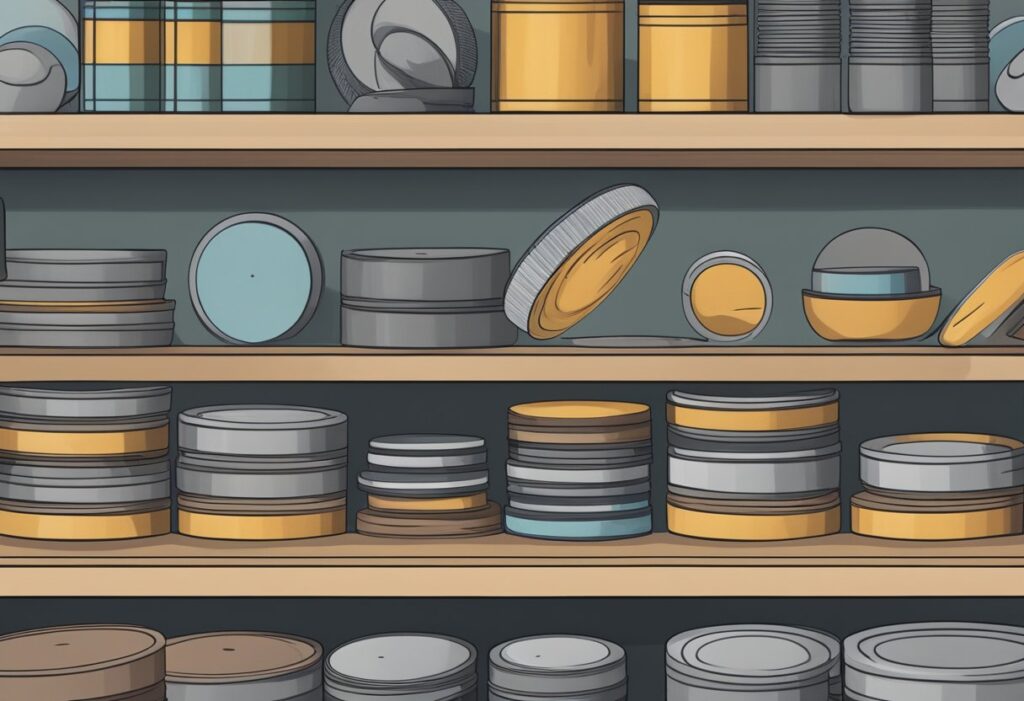
Leading Brands In Abrasives
Several leading brands are known for their quality and performance in abrasive discs. Some of the top brands include 3M, Norton, and Walter Surface Technologies. These brands offer various abrasive discs for multiple applications, including metalworking, woodworking, and automotive repair.
Among these brands, 3M stands out as a leader in abrasive technology. The company’s Cubitron™ II and Scotch-Brite™ discs are known for their speed, consistency, and long lifespan. The Cubitron™ II discs use precision-shaped ceramic abrasive grains that cut faster and last longer than conventional abrasives. Meanwhile, the Scotch-Brite™ discs use a nonwoven material that provides a consistent finish without damaging the workpiece.
Comparing Product Series
Several product lines within each brand offer different levels of performance and features. For example, 3M offers several product lines, including Cubitron™ II, Trizact™, and Scotch-Brite™. Each product line is designed for specific applications and offers different features.
The Cubitron™ II product line is known for its fast-cutting speed and long lifespan. These discs are ideal for heavy-duty metalworking applications, such as grinding, deburring, and weld removal. The Trizact™ product line, on the other hand, uses a unique microreplication technology that provides a consistent finish without leaving swirl marks. These discs are ideal for automotive repair applications, such as paint preparation and apparent coat blending. Finally, the Scotch-Brite™ product line offers a range of nonwoven discs ideal for surface conditioning and finishing applications.
When choosing abrasive discs, it’s essential to consider the brand and product line that best fits your application. Selecting a high-quality abrasive disc ensures your workpiece is complete to the highest standard.
Support And Resources
Reaching Expert Assistance
When working with abrasive discs, it is important to have reliable technical help to fix problems and get the most out of them. A lot of manufacturers offer strong support choices, such as live chat, email, and the phone. Most makers also have a variety of online tools, such as FAQs (frequently asked questions), product manuals, and videos that show you how to use their products.
If your abrasive discs give you trouble or you have questions, do not be afraid to contact the manufacturer’s expert support team. They can give you professional advice, help you fix common issues, and ensure your discs work at their best. Using these tools can help you fix problems quickly and improve your overall experience with the product.
Learning From Abrasive Experts
Aside from technical help, you have the option to learn from professionals in the field of abrasives. Several manufacturers employ a team of abrasive specialists to help you with any questions or concerns about using abrasive discs. If you want to take your talents to the next level, enroll in a training program or workshop offered by a company.
If you’re interested in learning from abrasive experts, consider contacting the manufacturer of your abrasive discs. If you’re looking to hone your abrasive disc talents, they can put you in touch with a specialist who can assist you.
Overall, having access to technical support and learning from abrasive experts can be valuable resources when working with abrasive discs. Feel free to contact the manufacturer of your discs to take advantage of these resources.
Industry And Market Insights
Trends In Abrasive Solutions
The abrasive disc industry has seen a rise in demand due to the increasing need for precision and quality in various sectors. With technological advancements, abrasive solutions have become more efficient and effective in achieving desired results. The market has seen a shift towards using engineered abrasives designed to meet the specific needs of different industries. These abrasives resulted from advanced materials designed to last longer, provide better finishes, and reduce costs.
One significant trend in abrasive solutions is the use of nonwoven abrasives. These abrasives are made from nylon fibers and can be used to get a uniform finish that won’t damage the surface. They find widespread use in the aerospace and automotive sectors for finishing and polishing.
Another trend in abrasive solutions is the use of ceramic abrasives. These abrasives, with ceramic grains, are designed to endure longer than ordinary ones while cutting at a higher rate. They see extensive use in the metalworking and woodworking sectors for cutting and grinding.
Adapting To Industry Needs
The abrasive disc industry has been adapting to the changing needs of different industries. With the rise in demand for precision and quality, manufacturers have been investing in research and development to create abrasives that meet specific industry needs. For example, the automotive industry requires abrasives that consistently finish materials such as aluminum, steel, and plastic. The aerospace industry requires abrasives that provide a high-quality finish on composite materials.
Manufacturers have also been focusing on reducing the environmental impact of abrasive solutions. Water-based coolants and lubricants have become more prevalent in the industry as they are more environmentally friendly than traditional oil-based fluids. Additionally, manufacturers have been investing in recycling programs to reduce waste and promote sustainability.
The abrasive disc industry has been growing steadily because quality and accuracy are becoming more critical in many industries. With advancements in technology and a focus on meeting industry needs, manufacturers have been able to provide efficient and effective abrasive solutions that meet the demands of different industries.
Customer Service And Contact
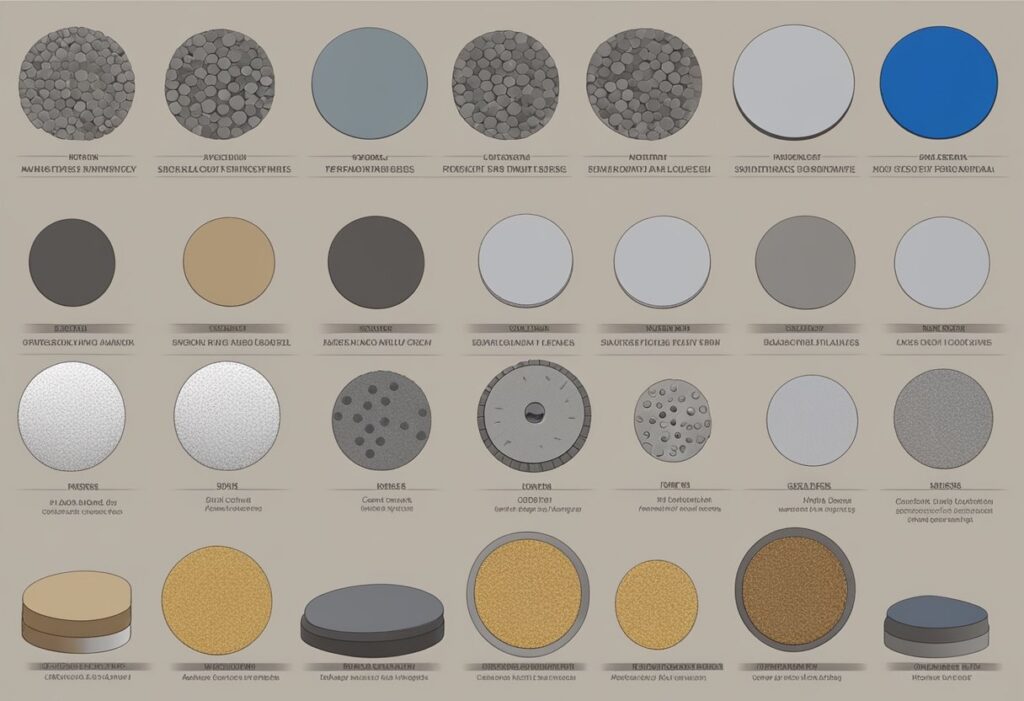
Customer Support Services
It is vital to have dependable customer support services available for abrasive discs. These can include technical assistance, product information, and general inquiries. Most manufacturers offer customer support services through their websites, including live chat, email, and phone support.
For example, Norton Abrasives offers North American customer service by telephone or fax from 8:00 a.m. to 7:00 p.m. Eastern Standard Time, Monday through Friday. Their website also includes a “Contact Us” page where customers can submit inquiries or comments.
CGW Abrasives also offers customer support services through their website, including a contact form and a toll-free phone number. Their customer service team can provide product information, order tracking, and technical support.
Contacting Manufacturers
If you have questions or concerns about abrasive discs, you must know how to contact the manufacturers directly. Product descriptions, purchase instructions, and warranty information are all examples of what this category encompasses. Most manufacturers have a dedicated “Contact Us” page on their website, which can include phone numbers, email addresses, and physical addresses. Some manufacturers also offer live chat support or social media support.
For example, 3M Metalworking offers an online “Contact Us” page where clients can send questions or request a salesperson’s phone number come to mind. It also provides a toll-free phone number for customer support.
Pferd Inc. offers a “Contact Us” page where customers can submit general inquiries or request technical support. It also provides a toll-free phone number for customer service.
Overall, having access to reliable customer support services and knowing how to contact manufacturers directly can help ensure a positive experience when using abrasive discs.
Legal And Privacy Information
Understanding The Privacy Policy
When using abrasive discs, it is essential to understand the manufacturer’s or retailer’s privacy policy. The policy should outline how personal information is collected, used, and protected. It should also be easily accessible and written.
Most privacy policies include what personal information is collected, how, and why it is collected. Examples of personal data include identity details like name, address, phone number, email, & payment info. The policy should also explain how the information processes orders or conducts marketing campaigns.
In addition, the privacy policy should outline how the personal information is protected. Methods like encryption and safe server infrastructure may be part of this. The policy should also explain how the information may be shared with third parties, if at all.
You must read the privacy policy thoroughly before purchasing or providing personal information. If the policy needs to be clarified or personal information adequately protected, it may be best to look for a different manufacturer or retailer.
Overall, understanding the privacy policy is essential in using abrasive discs safely and securely. By reviewing the policy, individuals can ensure their personal information is protected and used appropriately.
Frequently Asked Questions
What Are The Best Abrasive Discs For Steel Cutting And Grinding?
Choosing a durable and long-lasting abrasive disc is essential when cutting and grinding steel. Diamond-cutting discs are popular recommendations because they cut through hard materials well. Zirconia alumina discs are a popular choice for grinding due to their high stock removal rate and long lifespan.
For Metal Polishing, Which Abrasive Discs Work Best?
Flap discs’ adaptability and speed in removing material while maintaining a smooth finish make them popular for metal polishing. Ceramic alumina discs are also a good choice, as they are durable and can handle high pressure and heat.
What Are The Top-Rated Sanding Discs For Woodworking Projects?
Choosing a disc with the correct grit and material is essential when sanding wood. Aluminum oxide sanding discs are popular for woodworking projects due to their durability and versatility. Zirconia alumina sanding discs are also a good choice for heavy-duty sanding tasks.
How Do I Choose The Right Sanding Disc Size For My Wood Sander?
The size of the sanding disc you choose depends on the size of your sander. Most sanders use either 5-inch or 6-inch discs, but you must check the manufacturer’s recommendations to ensure you choose the correct size. Additionally, it’s vital to select a sanding disc with the proper grit for the task at hand.
Can You Recommend Durable Sanding Discs For Removing Paint Effectively?
When removing paint, choosing a sanding disc with a high removal rate and durability is essential. Ceramic alumina sanding discs are a good choice as they are durable and can handle high pressure and heat. Zirconia alumina sanding discs are also suitable for removing paint from metal surfaces.
What Is The Difference In Roughness Between 80-Grit And 120-Grit Sandpaper?
Sandpaper’s roughness grit determines the size; more significant numbers imply finer grit, while smaller numbers suggest coarser grit. 80-grit sandpaper is coarser than 120-grit sandpaper, which will remove material more quickly but leave a rougher finish. 120-grit sandpaper is finer than 80-grit sandpaper, which will remove material more slowly but leave a smoother finish.

